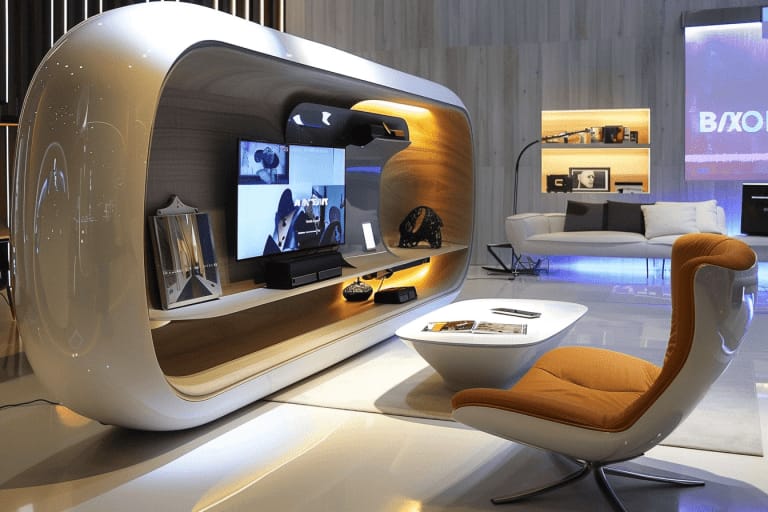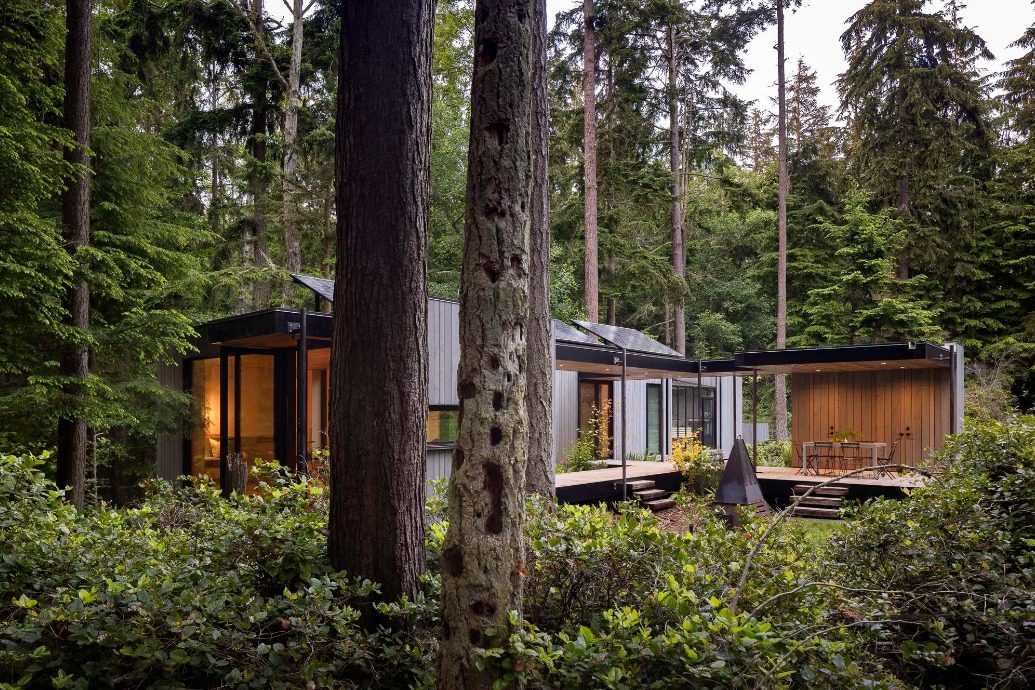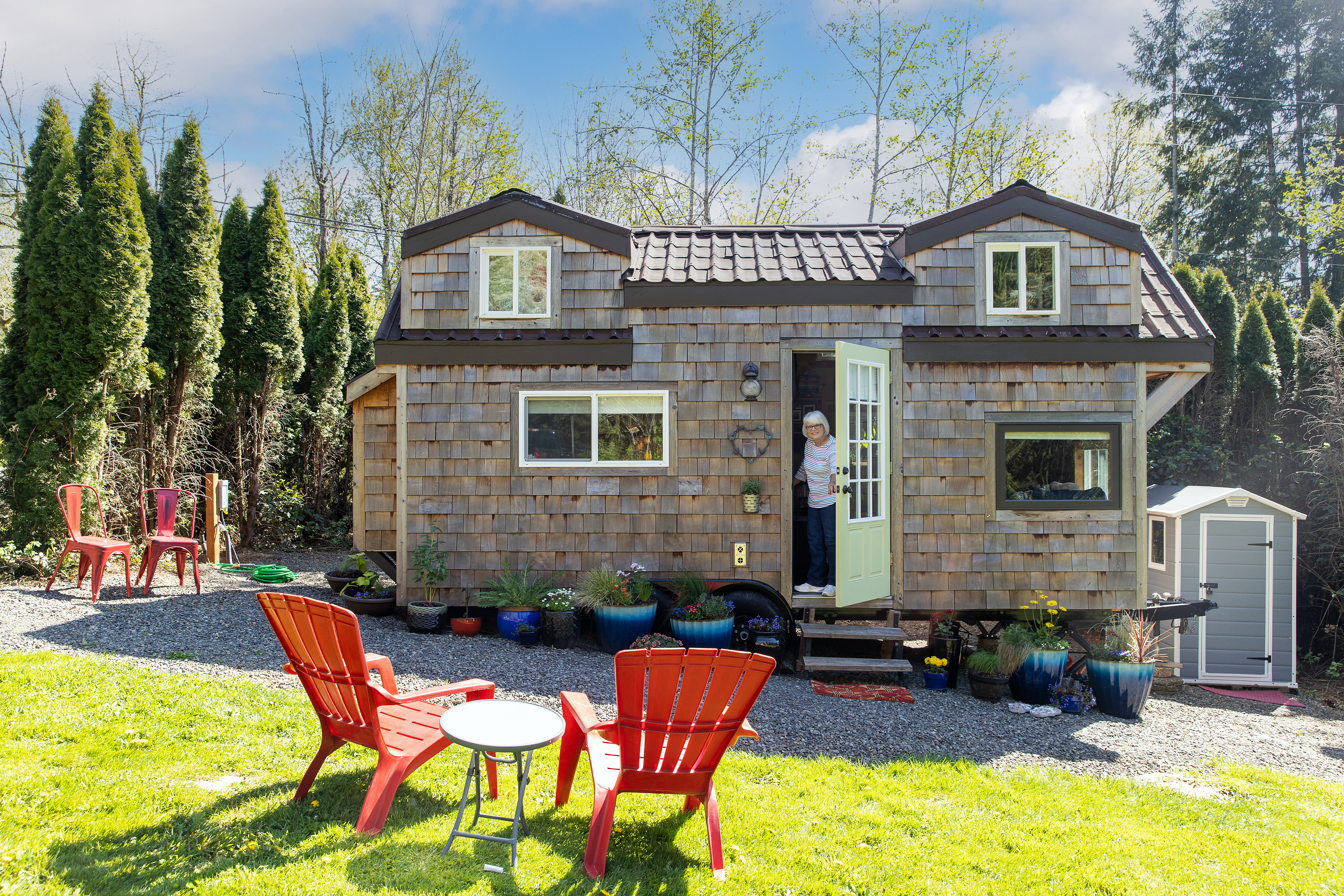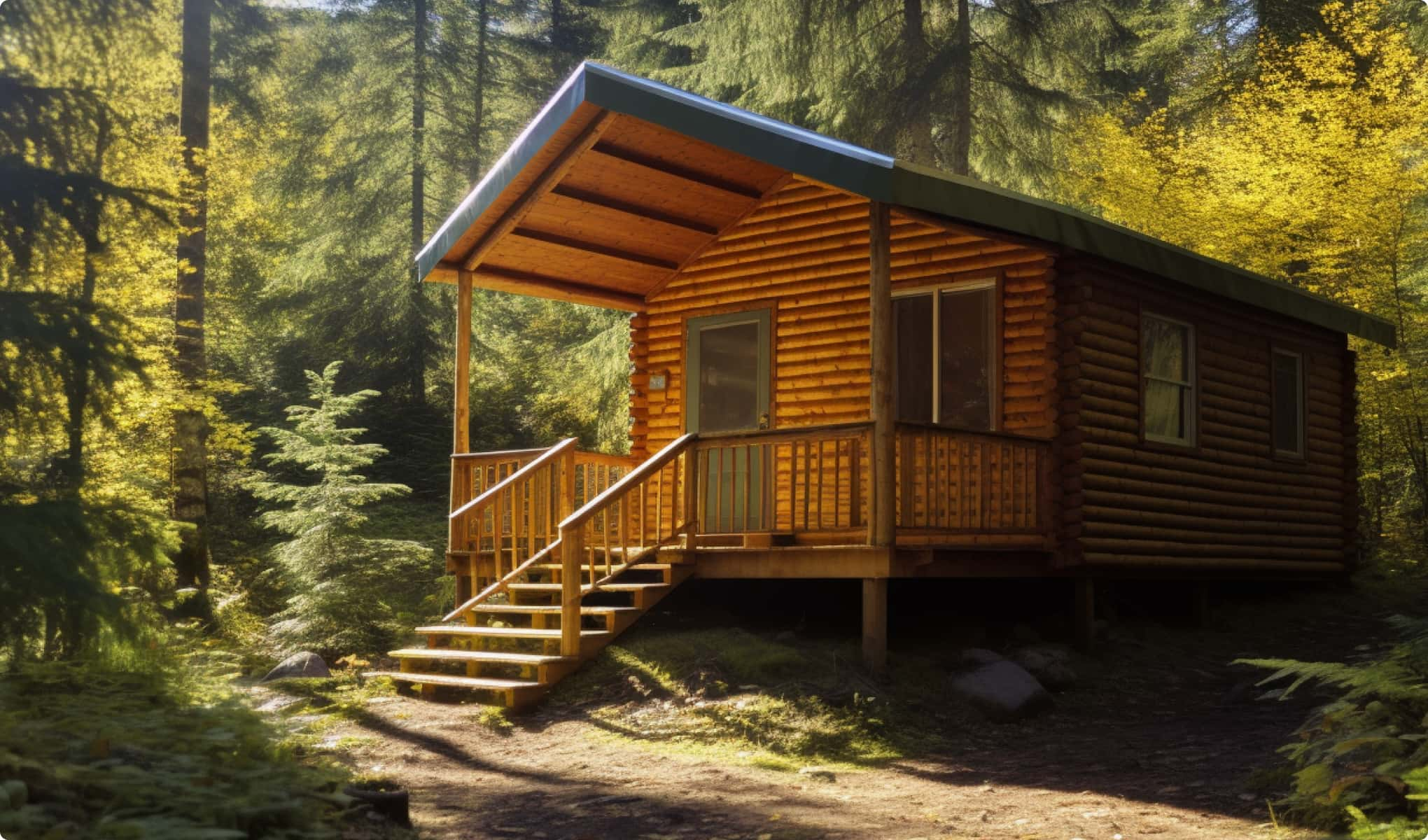Introduction: The Big Future of Tiny Homes
Tiny house design have evolved from a minimalist lifestyle to a hub for architectural innovation and eco-conscious living. In 2025, the tiny house movement is being reshaped by smart technologies, sustainable materials, and flexible designs that meet modern living demands. With growing urban density and a desire for adaptable housing, tiny homes are becoming more functional, stylish, and sustainable than ever before.

Multifunctional Spaces: Each Inch Counts
The core of tiny home efficiency lies in multifunctional design. Expect a surge in layouts that allow single-use rooms to transform seamlessly throughout the day.
Trending Features:
- Murphy beds that double as desks
- Stairs with built-in storage
- Foldable walls and modular living zones
Example:
Nestron Cube Two integrates intelligent furniture that adapts to various needs in compact spaces.
By applying spatial psychology, designers create illusions of openness, making micro homes feel more expansive and comfortable

Biophilic Design: Nature Indoors
In 2025, biophilic architecture is essential to tiny house wellness. Inspired by nature, this design trend focuses on creating healthy, calm environments that improve mental clarity.
Key Features:
- Indoor vertical gardens
- Use of raw materials like reclaimed wood, clay, and stone
- Floor-to-ceiling windows for light and airflow
Case Study:
ESCAPE Traveler XL uses panoramic glass and organic finishes to connect occupants with nature.
Biophilic design not only enhances aesthetics—it fosters a more mindful, livable environment in small-scale housing.

Smart Technology Integration in Tiny Houses
Tiny homes in 2025 are increasingly tech-enabled, allowing occupants to automate essential functions with minimal effort.
Popular Smart Features:
- Voice-controlled lighting and appliances
- Smart security and climate systems
- Solar energy monitoring apps
Inspiration:
Boxabl Casita combines prefab precision with energy-efficient tech, ideal for modern urban and rural settings.
From AI home assistants to compact smart furniture, tiny homes are leveraging digital tools for convenience and sustainability.

Sustainable Materials and Net Zero Living
Climate urgency has placed eco-conscious construction at the forefront of 2025’s tiny house designs. Many homes now aim for net-zero energy consumption using natural and recycled materials.
Key Trends:
- Low-VOC coatings, reclaimed wood, and bamboo
- Hempcrete insulation, mycelium panels
- Rooftop solar systems and greywater recycling
Example:
Minimaliste Nomad V2 offers durable insulation and off-grid capabilities in extreme environments.
Sustainability is no longer optional—it’s foundational to future-forward micro living.

Luxury Meets Minimalism
In 2025, tiny doesn’t mean basic. Many modern tiny homes exude luxury within limited space, offering refined materials and premium amenities.
Popular Lux Touches:
- Quartz countertops and frameless showers
- Matte finishes, custom lighting, and smart kitchens
- Compact luxury appliances from Smeg and Bosch
Designers to Watch:
- Modern Tiny Living blends upscale finishes with versatile layouts
- Mint Tiny House Company integrates form and function in eye-catching designs
- Luxury tiny houses now prove that small-space elegance is more attainable than ever.

Off-Grid and Mobile Tiny House Living
Mobility and independence are driving demand for off-grid tiny homes in 2025. Built on wheels or modular frames, these homes offer flexibility and freedom—ideal for digital nomads, retirees, and eco-travelers.
Must-Have Features:
- Solar-powered battery banks
- Composting toilets
- Rainwater harvesting systems
- Model to Explore: GoSun Dream integrates clean tech and off-grid functionality in a mobile package.These innovations support self-sufficient, low-footprint lifestyles in any climate.

credit:blog.ecoflow.com (A tiny off grid house)
Local Sourcing and Prefabrication
Amid rising global sustainability concerns, many designers are focusing on locally sourced materials and prefabricated construction methods.
Benefits:
- Reduced environmental impact
- Faster build times (weeks, not months)
- Customization for regional climates
Brand Highlight:
CABN creates prefab tiny homes using Canadian timber, tailored for colder environments and energy efficiency.
This trend contributes to low-carbon, high-performance housing in both rural and urban areas.

Cultural Personalisation and Aesthetic Diversity
Tiny homes are now a medium for cultural storytelling and personal expression. Design is moving beyond minimalism to embrace traditional aesthetics and artisanal touches.
Design Inspirations:
- Japanese Tatami rooms with sliding Shoji screens
- Scandinavian Hygge minimalism with soft textures and tones
- Mediterranean influence via Moroccan tiles and archways
- These homes celebrate individual identity and heritage—showing that even in 300 square feet, there’s room for the soul.

Conclusion: The Small House, Big Impact Movement
Tiny houses in 2025 are redefining modern living with innovation, sustainability, and personal style. By blending high-tech solutions, eco-conscious strategies, and cultural individuality, they offer a compelling alternative to traditional housing.
As design boundaries continue to expand, the tiny home emerges not just as a place to live—but as a symbol of freedom, resilience, and intentional living.
Reference
https://www.nestron.house/models/cube-two
https://www.escapetraveler.net/escape-xl/
for more blogs like this click here !!!






